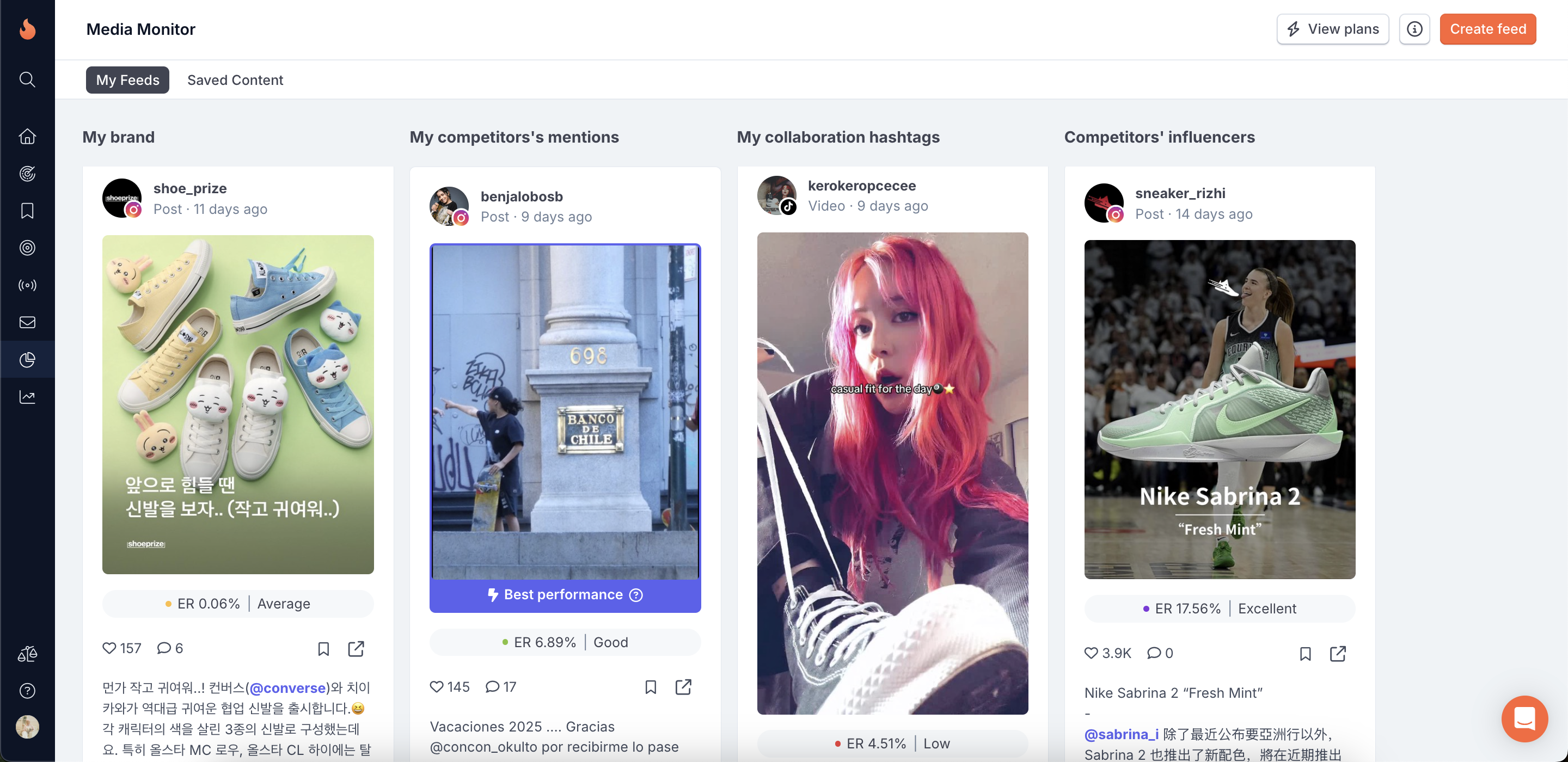
Most brands say they want to understand their audience, but few are actually listening beyond their own campaigns. While social listening isn’t new, the scale of what can now be captured and processed with AI changes everything. We covered this topic because marketers often miss key shifts in perception simply because they’re not tracking what’s being said when their brand isn’t tagged. This article explores how to track sentiment, surface untagged conversations, and catch early signals that traditional tools tend to miss.
You can’t fix what you don’t hear, and that’s the problem most brands face when they rely on mentions, tags, or hashtags alone. Social conversations are moving faster and further than manual tracking can handle. This article explains how AI-powered social listening gives brands a sharper view into public sentiment, potential risks, and real-time feedback.
There’s a lot a brand needs to do to stay relevant and keep up with market trends. Offering great products, services, or collaborating with influencers isn’t always enough. At some point, you need to do more than just “speak” about your brand through content and marketing; you also need to “listen.” Listening to what people are saying, how they feel about your brand, and what they actually need is also important.
Research shows that 51% of consumers think the most memorable brands on social media are those who respond to customers. But how can a brand be responsive if it isn’t paying attention to what its customers are saying? This is why more than 82% of businesses see social listening as their key planning element.
Social listening can sound overwhelming since it takes extra effort to track and analyze everything happening around your brand. But AI makes it easier. It helps you monitor social conversation, understand public perception, catch customer experience and complaints early, observe competitors, and protect your brand reputation without adding extra work to your team or requiring 24/7 attention.
Key takeaways:
More than 82% of businesses see social listening as their key planning element.
AI labels each mention as positive, neutral, or negative so teams can see mood changes before they snowball.
Brands use it to spot early signals of crises, competitor moves, or changing customer expectations.
Real-time sentiment analysis helps teams react faster and adjust messaging before issues spread.
Beyond reputation management, it supports product feedback, campaign evaluation, and influencer monitoring.
What is AI social listening?
AI social listening is the use of artificial intelligence (AI) to track and analyze online conversations, especially on social media, about certain topics; in this context, brands or products. It helps businesses understand what people are saying, how they feel, and what trends are shaping their market. Unlike manual tracking, AI speeds up the process and delivers insights automatically. According to the State of Social Listening 2024, 90% of the surveyed professionals now use generative AI to support their work. The same survey revealed that most of them use social data for competitive intelligence (53%), followed by brand perception (44%), crisis monitoring (42%), and category & cultural trend analysis (31%).
 Image Source: The Social Intelligence Lab
Image Source: The Social Intelligence Lab
Brands have always wanted to know what people are saying about them, but it used to take a lot of time and effort. You had to search different platforms, scroll through endless posts, and piece everything together; a process that could take days or even weeks. And just as you thought you had a clear picture, new conversations would pop up.
Using AI for social listening helps speed up the tracking process and laborious tasks while achieving the same result: a better understanding of your customers and brand position. Some AI tools today are even capable of predicting risks and future trends so you can prepare in advance.
How does AI social listening work?
Back in the early 2000s, social marketers had to manually browse customer forums, blogs, and social media platforms to find brand mentions and discussions about products, services, or the industry. Now, AI has changed this manual method into a more sophisticated, efficient way.
AI uses its algorithm to detect, comprehend, and generate report in social listening process in the following steps:
1. Collect data from different sources
AI scans social media platforms such as Instagram, X (previously Twitter), Facebook, LinkedIn, and other UGC platforms like blogs, forums, news sites, and review platforms to collect mentions of specific keywords, brand names, or industry-related topics (depending on what you choose).
2. Process raw text using Natural Language Processing (NLP)
AI then breaks down and analyzes texts using NLP to understand language, context, and meaning. Not only does it understand obvious words and sentence structures, AI also senses slang, sarcasm, and regional language variations to interpret the real meaning behind words. It’s also able to recognize brand references, even when the brand name isn’t explicitly mentioned. Some more advanced AI tools can even identify logos and objects in images and videos.
3. Analyze sentiment
Once it understands the text, AI determines whether the sentiment is positive, negative, or neutral. Some AI tools can also detect emotions like happiness, satisfaction, anger, or sadness. All of this is useful for understanding public perception of a brand, product, or trend based on conversations across different online platforms.
4. Analyze trends, topic, and spikes in engagement
Aside from analyzing text, AI also looks at conversation patterns to spot rising trends, recurring themes, or sudden spikes in discussions about a particular topic. It then tracks how the conversation is spreading, who is talking about it, and whether influencers or major media outlets are involved.
5. Generate insights and reports
Lastly, AI compiles all the analyzed data into reports, dashboards, or alerts so brands can act on the findings immediately. This eliminates the need to create social listening reports manually which takes more time.
What could brands use social listening for?
Now that you know what AI social media listening is and how it works, it’s time to figure out what you can do with the results and how it can improve your overall brand.
1. Brand awareness and presence
Using AI social listening tools means you’ll always be in the loop about what people are saying about your brand. This also means you can jump into conversations that are considered as potential to boost engagement and visibility. By actively participating in relevant discussions, your brand gains authority in those topics. As your presence grows, it becomes easier to build brand awareness and establish an identity that shows your brand is engaged and values its audience.
2. Sentiment analysis
Behind every comment, review, post, and article lies customer sentiment toward your brand. AI translates this data into three categories: positive, negative, or neutral. This makes it easier to gauge public perception without having to track social media conversations one by one. Receiving the analysis in a form of sentiment percentage also helps you decide what actions to take next in order to improve the positive sentiment.
3. Finding influential figures
When tracking online conversations, you’ll naturally come across people who drive discussions and influence public opinion. Some may be praising your product and attracting engagement, while others provide constructive feedback that sparks further discussion. These people could be your next potential brand advocates or ambassadors, as they have already showcased their ability to capture attention and draw customer engagement through their content.
4. Keeping up with social trends
Compared to conventional research methods, AI social listening provides useful real-time insights and keeps you updated almost every minute. This is a big advantage for marketers since they can keep up with social media changes, trends, and algorithms that always move fast and need quick responses to stay on top.
5. Market research
Another area AI powered social listening can open up is the opportunity to conduct market research in a fast and relatively cheaper way compared to traditional methods. By monitoring online discussions, brands can find new revenue streams, such as:
Fresh audiences – For example, brands may notice growing interest from a demographic that wasn’t previously a primary target.
Potential product lines or services – By analyzing customer feedback and conversations, brands can identify what people want or expect from them.
6. Campaign evaluation
Social listening helps you catch audience reactions to your marketing campaigns, so you can monitor progress and measure success in real time. By accessing reports or dashboards, you can see impressions and feedback that help you understand which aspects resonate with the audience and what can be improved.
One of the best things about social listening is that it provides audience insights while a campaign is still running, which makes it easier to adjust and optimize them at the earliest opportunity.
7. Competitor analysis
Other than tracking how your own brand is doing on different platforms, social listening allows you to keep an eye on your competitors. Comparing your performance with theirs explains where your brand stands and how you measure up in the market. Furthermore, you can also learn from their successes and avoid their mistakes.
All you need to do is set up keywords, hashtags, or competitor accounts to monitor — this way, you’ll get updates on what’s happening in your industry outside your own brand.
8. Crisis management
Since social media platform moves fast, brands can’t afford to be the last to know when something goes wrong. AI social listening reduces this risk by monitoring conversations 24/7 and detecting potential negative trends, shifts in perception, or unusual activity related to your brand. AI can send alerts as soon as a crisis starts to unroll, so you can respond quickly and take action before things escalate. This helps your brand stay proactive and responsive in handling critical situations.
A glimpse into HypeAuditor’s Social Listening Tool – Media Monitor
With so many AI social listening tools available, choosing the right one for your brand’s needs can be overwhelming. At HypeAuditor, we aim to provide marketers with a comprehensive influencer marketing platform by bringing together multiple features in one easy-to-use tool.
If you want to monitor posts that mention your brand, collaboration hashtags, or even your competitors, you can do this through the Media Monitor tool, where you can create multiple feeds. This feature allows you to track what people are saying about your brand and competitors, how influencer campaigns are performing, and what content is gaining traction.
By analyzing these patterns, you can identify what works and what doesn’t in influencer marketing. Additionally, you may find potential influencers who are already posting about your brand organically. If their content performs well, you might consider reaching out for a paid collaboration.
Looking Ahead
AI social listening helps brands stay in the loop about what’s being said about them, new trends on the competitors’ side, and how people feel about a product or service. With tools like HypeAuditor, brands don’t have to spaend hours social media monitoring or tracking these things manually, since everything they need is in one place and ready to explore.
Social listening is proof that listening to people is just as important as talking to them through your content. The more you tune in, the better you can respond, adapt, and connect with your audience. So, if you want to keep up with the conversation and make smarter moves, now’s the time to start listening.
For marketers who are ready to listen, make sure to act on this important to-do list:
Set clear listening goals. Track your brand name, key products, industry terms, and top competitors to build a focused query list.
Share weekly sentiment and trend summaries with content, product, and customer-success teams so findings turn into action.
Compare sentiment and volume before, during, and after campaigns to see what your efforts delivered.
Pair AI with human context to avoid misreading sarcasm or cultural nuance.
Always review and refine. Update keywords, language filters, and alert thresholds each quarter as slang, platforms, and priorities evolve.













